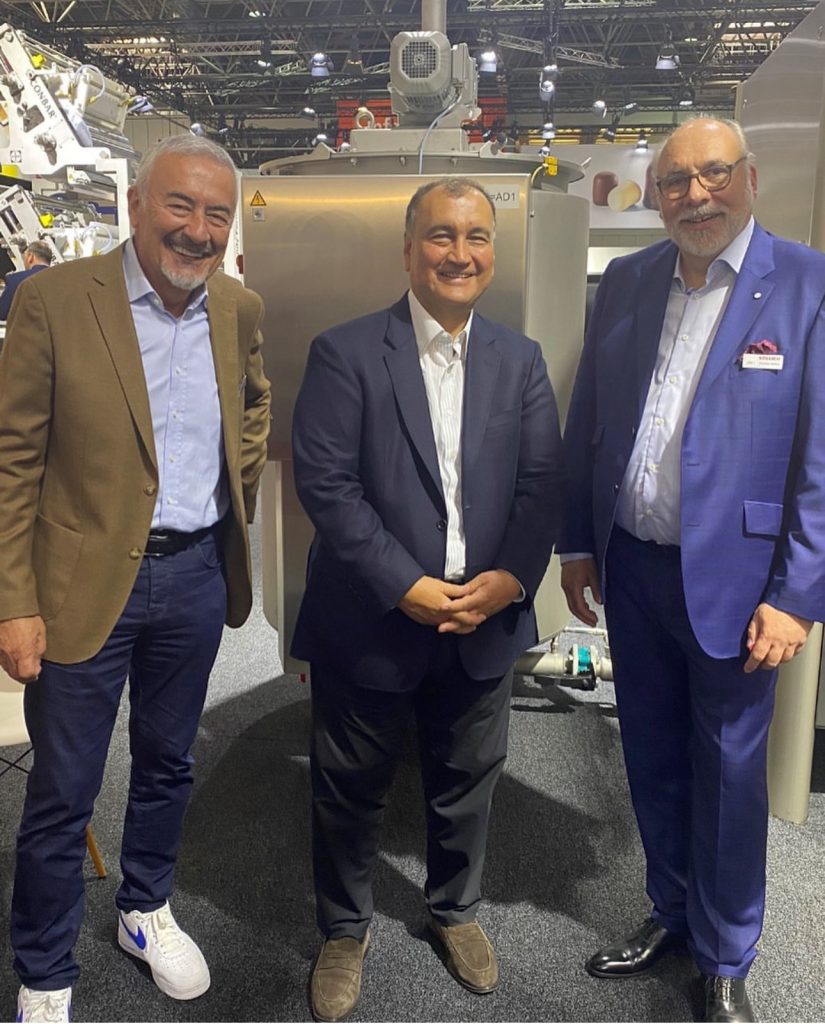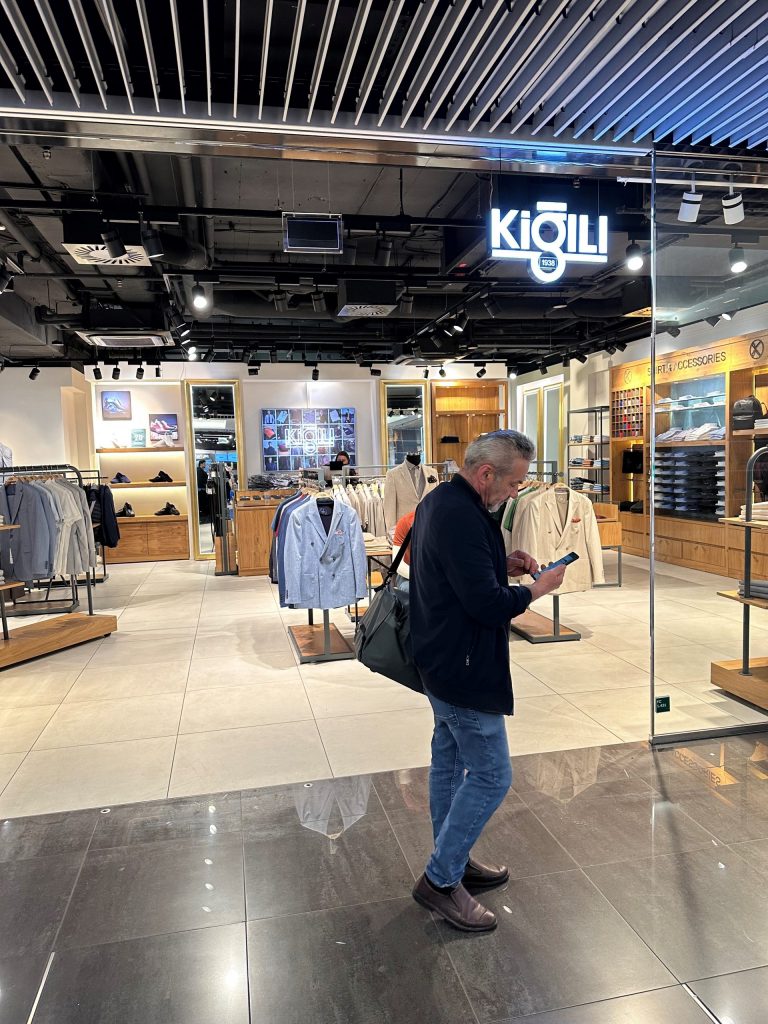NEW INVENTIONS IN THE PACKAGING INDUSTRY
Interpack is a very valuable fair held in Germany, where solutions and innovative concepts are presented in all industrial branches of the packaging industry. I have been going to this fair, which is held tri-annually since 1958, for the past forty years. It is very enjoyable for me, and of course also very instructive. In fact, when I was a child and my father took me to the Ülker factory for the first time, he taught me how to pack biscuits by hand and how to make multiple large packages with paper and string, and he told me that packaging was very important. Later, he had me take painting lessons in the office during my primary school years to contribute to my understanding of packaging design. Packaging was of great importance for my father in all aspects, from preservation to presentation, communication, and quality. Biscuit tins, in which biscuits previously were placed by hand and were later weighed, have been replaced by paper or aluminium foils and even by vegetable-based transparent cellophane films. Printed cellophane and cardboard boxes followed. In the 70s, we were wrapping Taç Crackers and wafers with the first “flowpack” packaging machines we bought from Italy. Before that, we started to pack Pötibör and Piknik biscuits tightly back-to-back with French machines. It was also in those years that the pretzels were packaged in transparent, printed bags with West German machines. In fact, later on Yıldız Holding’s investments were partly in the production and printing of rigid and flexible packaging films, paper, and corrugated cardboard, and we were the industry leader in this regard.
This adventure, which started with 255 exhibitors and 32,500 visitors in the first year Interpack Fair was held, increased to 2,700 companies in 2023. I don’t know how many visitors it had this year, of course, but there was a pretty exceptional crowd. If the idea of packaging sounds boring to you – think again as innovations at this fair are really interesting… After the compulsory break due to Covid, a lot of things accumulated and were ready to be seen and shared. Together, let’s see what the newest inventions of the leading companies in the packaging industry have been up to 😊.
Packages are in our lives much more than you think… In recent years, ecological concerns have been increasing in our agenda, which leads scientific and industrial research to the development of new materials and processes that offer truly ecologically sustainable solutions. This is the current trend.
According to estimates, post-consuming, plastics loose around 95% of their market value (between 70 and 105 billion Euros annually, Ellen MacArthur Foundation, 2016). For this reason, the packaging industry is a very sensitive sector in terms of global sustainability.
Another critical point, which is not focused on regarding sustainability, is food waste. Plastic packaging reduces food waste by 33%, extends the shelf life of packaged products, and guarantees quality and safety. The amount of energy and resources required to produce food may be greater than the amount required for plastic packaging which is used to preserve it: that is, plastic packaging helps to conserve more of the resources used.
Actually, I can share a lot of technical information about materials or recycling here, but I guess that could be the subject of another article. It’s hard to imagine a plastic-free world because plastic offers performance levels that other materials cannot match. For this reason, it seems that it will always be in our lives as a complement among materials that can support technological progress.
As an example, we can consider that tanned leather from two thousand years ago is almost used today instead of plastics. At present, we can work to examine materials and their life cycles and to see these materials as a resource rather than just waste at the end of their lives. Problems with the reuse of post-consumer plastic waste are technically as well as partly linked to deficiencies in consumer education. When these deficiencies are eliminated, positive effects on the environment will emerge.
Now let’s take a look at the innovations and technologies in the world of packaging, which are in our lives every day, even if we are not aware of it.
I think it’s a good idea to start by seeing the multitude of packaging types. This industry is a very flexible and massive industry serving many categories.
Robots that can work flexibly are made according to the shape you predetermined. As you can see in the video, for example, they can feed three different types of goods.

In the packaging, the freedom to arrange the product in the way you want with robots is provided. Robots driven by artificial intelligence move on an independent plane.
Packages made of recyclable materials are very popular due to sustainability. The balls inside the Cafe Royal you see in the video are actually coffee capsules. Their feature is that they have produced these “capsule” coffees using completely natural materials.
Chaos robot: You pour the products into a pile, then it sorts and arranges them selectively. A Bavarian company that makes this robot is pretty good at this stuff. But this was done by a Tunisian software expert. It works so fast that it’s hard to even record it. For some reason, I made a joke using the German and Arabic idiom, “The devil gets involved in haste (meaning, ‘great haste makes waste).”. But the Germans did not understand, and the Tunisian asked concerned, “Where did you get the devil from?”.

We are glad that we have always participated in this fair with our company Polinas, which has been the pioneer of packaging for many years. The souvenir photo we took with the team this year is above.
I think it is almost 40 years now even before Polinas, I would always definitely go to this fair. In the past, I used to GOYA until I could not stand while visiting the fair. I was so very tired, and I was even invited out because I missed the check-out time. In the evening, we would gather with all our friends and talk to each other about who saw where and what. At that time, of course, such photo and video shooting opportunities were not common, so we used to make sketches. We used to think, “How can we do it?” for products, robots, and machines that we could not afford. The Japanese used to take a lot of photos, but unlike today, this was not allowed, so it usually ended up being removed from the stands. Now the conditions are not like that, but some machines are still kept covered; you go, you demand, then they open it and show you, the reason being that they have applied for a patent.
One of these companies, for example, Italian Cavanna, made its first export to us in the 70s. We sometimes bought goods and sometimes engineering from such companies, but we never got a turnkey facility/robot as we couldn’t afford it.
Automation is thought to be done only for cost reduction, but for example, dosing of pastries and process automation allow quality products to be produced 24 hours a day. With these, the consistency of quality and the continuity of the work is ensured, which is more important than anything else.
After I became general manager in 1986, I bought our first boxing robot from Bavaria. This project was an Italian and German partnership. We were able to make the first Metro chocolates with that plant. When I bought this plant in 1986, it could produce 1200 Metros per minute, and at the end of the line, 12 people were working to put the products in boxes of 24. We started to do this efficiently with a robot, the robot with its fingers was picking up the chocolates between them, and it was filling and closing the box with four lines on top of each other in 6 rows. This robot is still working, even though its joints recently wore out, so we changed it 😊.
When we bought the robot, we did not expect it to be such a successful solution, and it worked very well for us. Who knows how many similar robots we have now? In fact, the owner of the company from which we bought the robot must have wondered about us that he had come to Turkey with his private plane to meet us. One of the first questions he asked me when we met was who our rival was. Thank God we are still the leader today; I told him, “Our rivals are housewives.” Because they have time, they want to do the best for their children, so we make cookies “as if it was from a mother’s hand” inspired by these precious competitors.
Now, of course, technology improved even more. For example, in Godiva USA, we have many robots called Spider robots, suspended from the ceiling and working more flexibly. Years ago, I missed the work of a Turkish Ph.D. student from EHT University in Zurich. At that time, there was no such internet, no online repository of research, no Google… I was looking for bright students to catch innovation, and I used to get information to keep the factories up to date while supporting their studies. I missed this Turkish student I was talking about and his work under these conditions because a German company had sponsored him before me. Now, of course, there are many more different versions of these robots, and many companies are doing the same now. For example, an Italian company imitated a robot of Schubert. So I said to them, “Grüss Gott” (God bless you, God bless you) in German, but they just ignored it 😊.
I named this robot “Pacman”. Working with artificial intelligence, this robot collects as many products as you want; 8, 6… If you have noticed, it is focused on providing flexibility in robots. In other words, it is the era of robots that can respond to various needs as much as possible rather than a single function.

Since I go to the fair every time it is organized, I can also follow the transformations of the participating companies, and the beautiful thing I see is that the companies can continue on their way, even if they change their name or model. Children taking over the businesses after fathers, our ongoing friendships… All of them are very precious. This time, since the fair was held after the disruption due to Covid, we met with much more development compared to the previous one, and there were very good works. Interpack is an exhibition with an elite crowd.

And on the way back, I came across a familiar brand at Düsseldorf Airport, Kiğılı. This was also a very enjoyable moment for me.
Let me finish the article here, and I have added topics below that I will post in the future for those who are interested. These are the topics that I chose from many brochures and booklets I collected from the fair and that I think might interest you, I learned a lot from all of them, and I think you will too:
Plastics: Ecological sustainability and innovation
The contemporary challenge of plastics
Measuring the sustainability of the packaging
Mechanical and chemical recycling processes for cyclic packaging
Strategy for waste management of plastic packaging in Europe
Functional requirements that a material must meet in order to be used with Form-Fill-Seal (FFS) technology (Morris, 2017).
I would be very happy if anyone would like to share different technological innovations in the packaging in the comments and contribute to my article. This field is developing rapidly, and I hope we will be together in new articles.
Note: This open-source article can be quoted by mentioning the author. No copyright is required.

